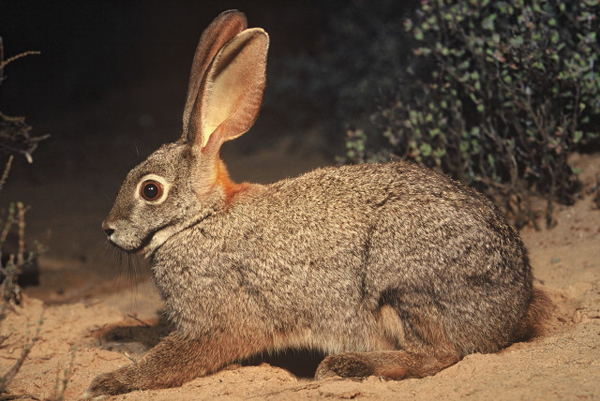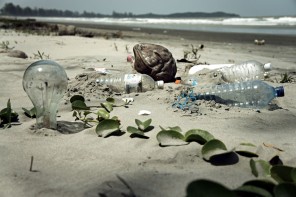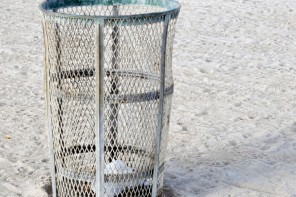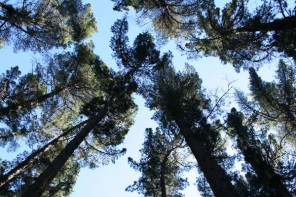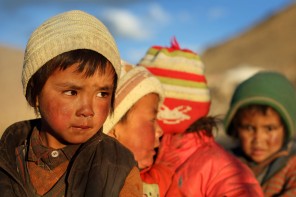Chocolate rabbits and Easter are synonymous, with the roots of the tradition going far back to the pagan festival of Eastre and its fertility symbol of the rabbit.
This year, as was the case in 2011, the tradition gets an added twist with the famous golden Easter bunny of Lindt & Sprüngli, Swiss master chocolatiers, joining in the fight to save one of South Africa´s most endangered mammals, the riverine rabbit.
Lindt will donate a percentage of all sales from their legendary Lindt gold Easter bunnies to the Endangered Wildlife Trust’s (EWT) riverine rabbit programme.
It is the second year that the company joins forces with EWT, a non-profit nature conservation organisation focussing most of its efforts on field research.
While the golden chocolate rabbit is hard to miss in the shops – and even harder to resist – the riverine rabbit (Bunolagus monticularis) is far less legendary. In fact, it is a rather elusive character, hiding out in thick, thorny shrubs and doing most of its foraging during night time or early dawn.
The 13th most endangered mammal in the world, the riverine rabbit is South Africa´s second most threatened species after the De Winton´s golden mole. It faces an uncertain future.
It is estimated that only a few hundred of these rare animals remain in the wild today. The riverine is now listed as critically endangered on the Red List of the International Union for the Conservation of Nature.
Saving the Karoo
The rabbit´s endangered status is only a small part of the reason why the EWT embarked on its riverine rabbit programme almost a decade ago.
Most of the field work takes place in the Klein and Great Karoo region, the rabbit´s natural habitat. One of the programme´s aims is to conserve the biodiversity of this region, as the loss of habitat and land use changes are the most important threats to these animals.
“By saving the rabbit we are also in effect saving the Karoo,” says EWT project manager Christy Bragg.
The rabbit programme is the flagship project in this ecosystem, and the animals’ status is used as a key indicator of what’s going on with the region’s river ecosystems.
Its extinction in many areas where it formerly occurred indicates the degraded status of riverbanks along the perennial Karoo rivers, according to Bragg.
“The riverine rabbit is an important indicator species for ecosystems. Through the programme we are saving a whole suite of other animals, plants and insects,” she says.
Bragg says the money received from Lindt will be used in three areas:
Firstly, the actual number of rabbits and the number of breeding pairs is still open to speculation and needs further research. According to Bragg, an estimated 250 breeding pairs exist.
A second aspect will focus on habitat rehabilitation, with the planting, not only of foliage for food, but also for shelter as these creatures are extremely shy. Local people are enlisted in habitat restoration projects.
The last part of the programme is critical as most of the riverine rabbit populations live on private land.
This third aspect focuses on getting private landowners to become partners in the programme. Farmers are encouraged to promote integrated land management practices that can sustain the riverine rabbit, its habitat and many other species while ensuring socio-economic benefits to landowners and communities.
So far, about 350 000 hectares of riverine rabbit habitat is under informal stewardship agreements with farmers in the North and Western Cape areas. These agreements are set to be formalised in the near future.
Lindt bunny and Sanbona
Lindt hopes to break the current record of R250 000 (US$32 600) from Easter sales in 2011, which was donated to the EWT programme.
The little hollow chocolate figurine, with its trademark red ribbon and golden bell, has been around since 1952 and celebrates its 60th birthday this year. It is sold in various sizes and forms of packaging.
Lindt, together with Sanbona Wildlife Reserve, is also offering a two-night getaway to the reserve, one of the rabbit’s habitats.
Since 2006, when the first rabbit was sighted at the reserve, over 100 sightings of the little creature have been recorded. The reserve has instituted its own research initiative to study the rabbit.
In 2003 Sanbona introduced lion and cheetah into the reserve for the first time, marking a significant milestone in the history of the Karoo.
Sanbona lies in the Klein Karoo near Montagu, a mere three hours’ drive from Cape Town along the R62 and is located at the foot of the Warmwaterberg Mountains.
Words by Emily van Rijswijck via Media Club South Africa

